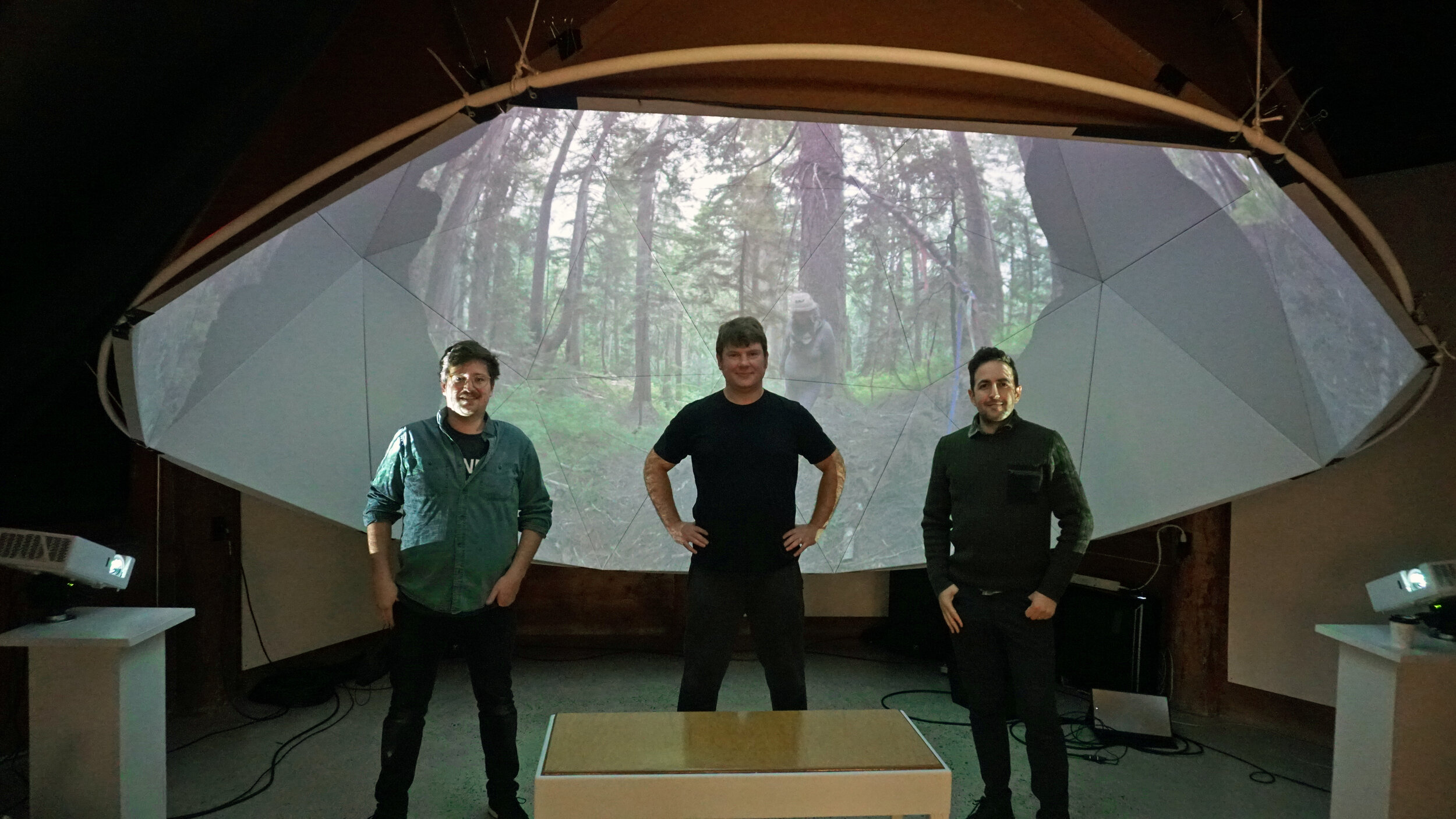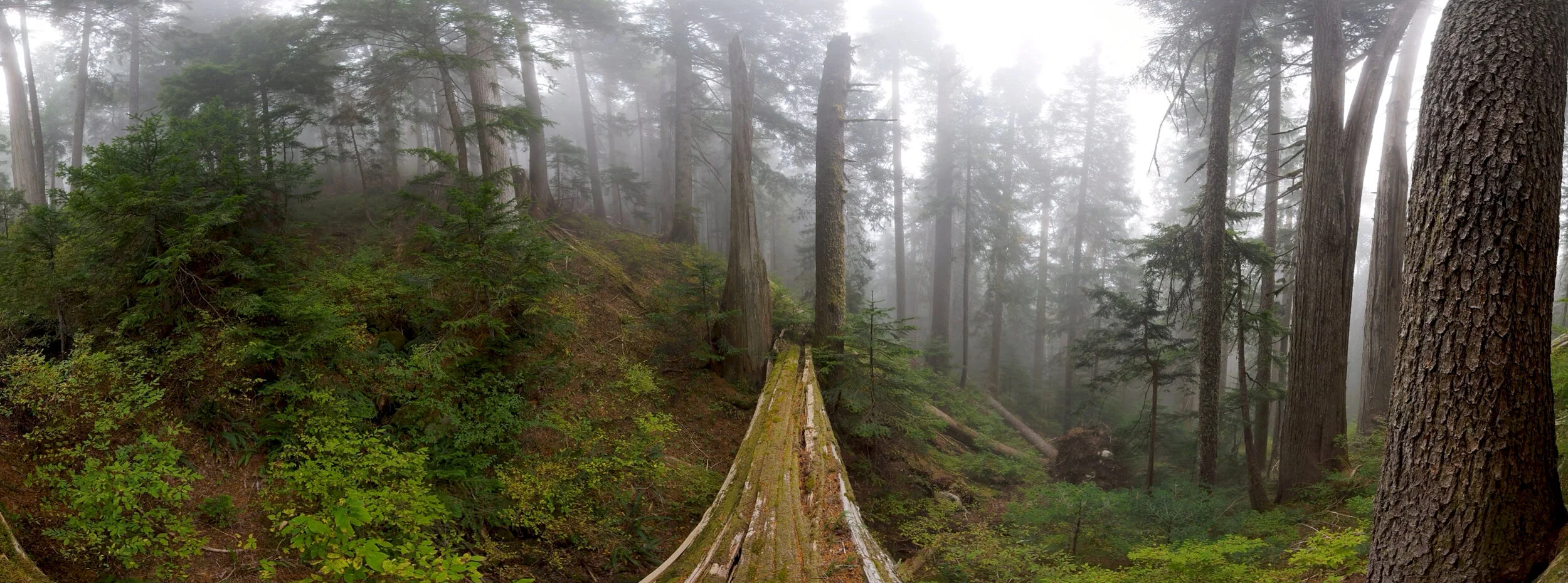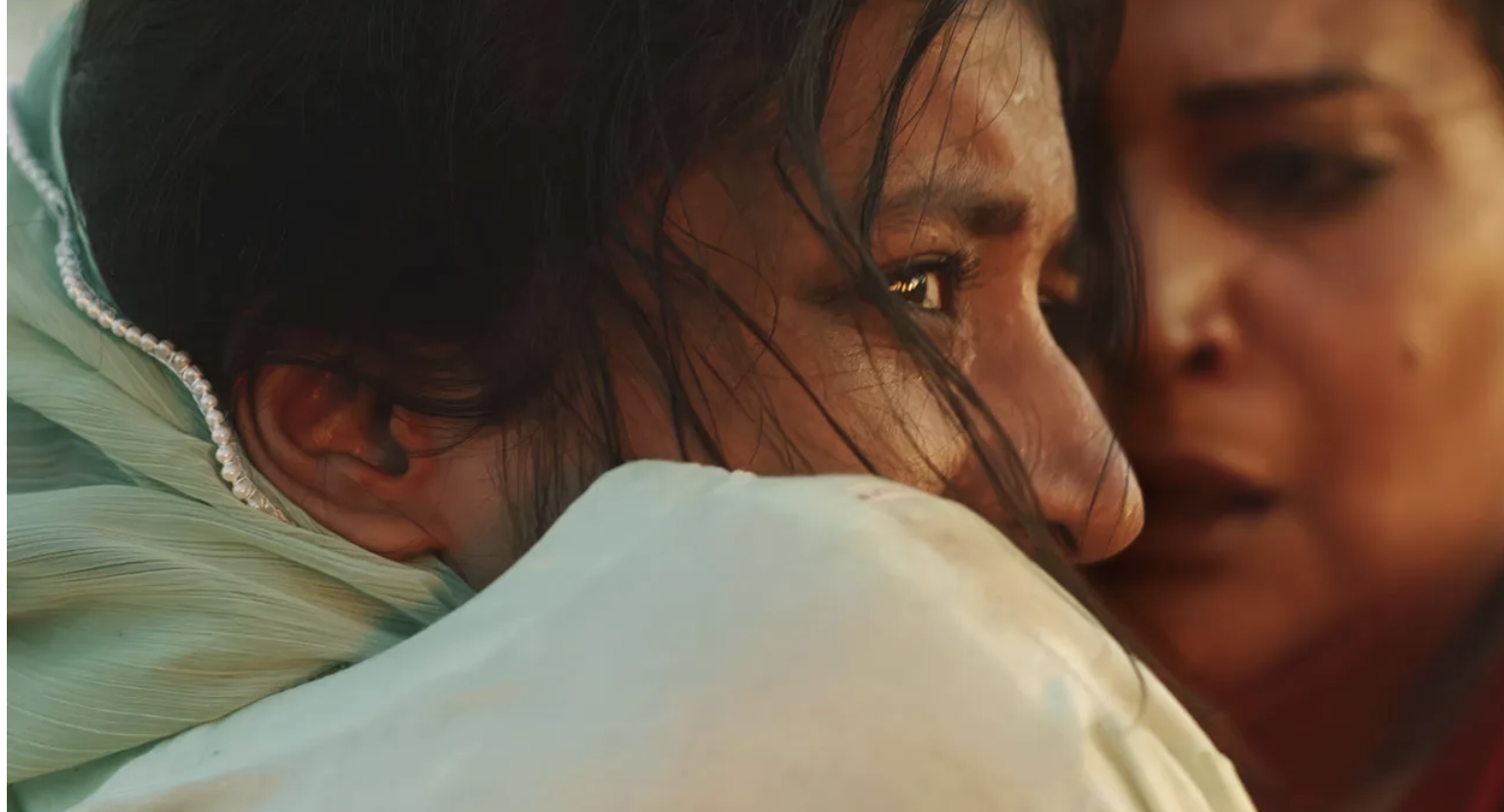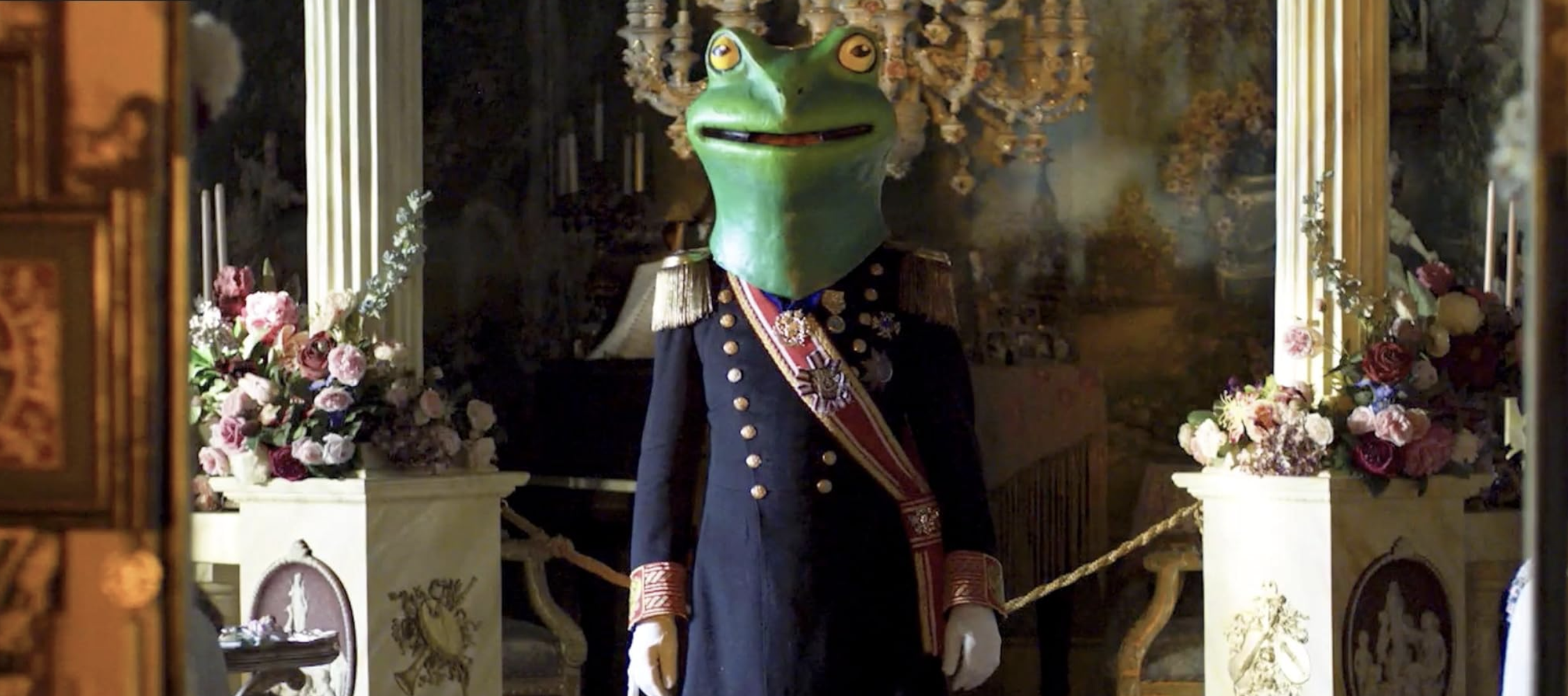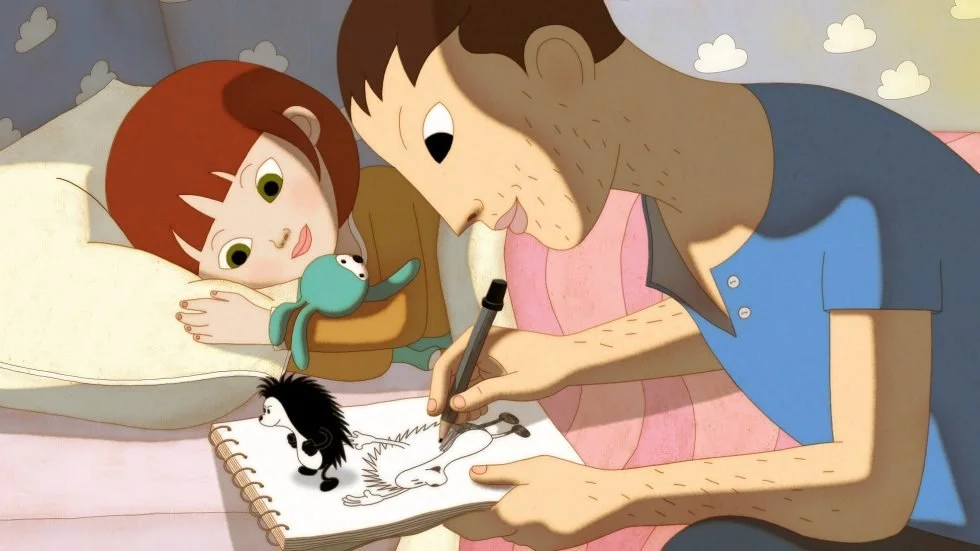Sanctuary: The Dakota Bear Ancient Forest Experience takes visitors into an ancient BC stand of trees that's under threat
Filmmaker Damien Gillis makes a 360-degree case for protecting old growth
The Sanctuary team stands in its “dome”: projection technologist Eric Chad, producer Damien Gillis, and VR cinematographer Olivier Leroux. Photo by M. Simon Levin
Sanctuary: The Dakota Bear Ancient Forest Experience takes place as part of the PuSh International Performing Arts series; limited viewings are now sold out
BC FILMMAKER and journalist Damien Gillis has found awe and magic in trees ever since he was a kid growing up in Campbell River, with a poster of giant sitka spruce in his bedroom.
“To see the majesty of that gave me a sense of wonder, and I loved staring at those trees at night before I went to bed,” he tells Stir. “We've got so much clutter now….We need media that will cut through that clutter and really tell people how special these places are.”
Sparking a similar sense of wonder is just what Gillis was after with Sanctuary: The Dakota Bear Ancient Forest Experience, a project he created with codirector-cinematographer Olivier Leroux and Skwxwú7mesh, Stó:lō, Hawaiian, and Swiss artist and ethnobotanist Cease Wyss. Filmed in an endangered ancient forest in Sḵwx̱wú7mesh (Squamish) territory on the Sunshine Coast, it’s projected across a dome where viewers sit surrounded by the images.
Because of strict audience limitations due to the pandemic, viewings for small houshold “bubbles” sold out quickly. But the issues raised in the installation are still critical, and Gillis plans to tour Sanctuary around the province as restrictions ease. And time is of the essence.
Audiences who are lucky enough to view the piece at Performance Works will take in an auditory mix of music and nature sounds with the wraparound view of an ancient forest. Host Wyss takes them inside the hollow trunks, where black bears make their winter dens, and past ancient yellow cedars as old as the Ice Age.
“We wanted people to see that and experience it viscerally in a way that’s hard to convey through conventional film. We wanted to achieve a sensory exploration of this place,” explains Gillis, “to bring people as close as we can technologically to observe the world around there—without going there.”
The urgency that underlies the making of the project is that last year, the province was preparing to auction off the cutblock in the Dakota Bear bowl via its BC Timber Sales. Due to activism, that decision has now been deferred to early next year, and environmental groups like Elphinstone Logging Focus are calling for legal protection of the land. They argue there are at least 33 active bear dens in the Dakota Bear Sanctuary, as well as dozens of culturally modified trees—cedars from which Skwxwú7mesh and Shíshálh people have harvested fibres for centuries. Some of the trees are more than 1,500 years old.
An independent study last year called B.C.’s Old Growth: A Last Stand for Biodiversity found that only about one percent of this province’s forests are left that qualify as ancient forest.
A still from Sanctuary, which surrounds viewers on a 360-degree screen.
“It’s important for people to understand that they're irreplaceable,” Gillis says of old growth forests, adding the cycle of harvesting and treeplanting will never replace thousands-of-years-old ecosystems.
“We’re at a critical moment where the province has some pretty striking information in front of them.”
The unique and humbling quality of the ancient forest hit Gillis, who would hike with the small team for hours with heavy technical gear for the Sanctuary shoot. The filming took place last summer, and forest-fire smoke had been choking the Lower Mainland and surrounding areas. “Once we were in the forest it was amazing how clear the air was,” Gillis says. “It just reminded you what these forests actually do.
“In the old-growth forest, there is lots of room to move—it’s not packed together like a tree farm,” he continues. “Every so many feet there's a giant yellow cedar or hemlock, but there are lots of smaller plants—wild orchids, ferns, devil’s club, mushrooms… Cease is an ethnobotanist, and we got quite an education on these plants as well.”
In Sanctuary, the crew re-creates one of the most memorable experiences in the forest: stepping into the giant hollows at the bottom of trees where bears den over the winter.
“We were able to put our 360-degree camera inside one of these trees and you can look around,” says Gillis, who adds five or six adults could fit into the bigger hollows. “We also recorded sound within the cave….There were some massive spiders in there and I could hear them crawling up above my head, clicking their feet on the bark.”
In Sanctuary, Wyss leads viewers from that lush, living world to nearby clearcuts for comparison—another striking sight to be surrounded with in the dome.
Cease Wyss surveys a clearcut on the Sunshine Coast in Sanctuary.
And that dome itself? It became a novel way to create a virtual tour of the Dakota Bear forest without resorting to VR headsets. The latter would have not only been problematic in our touch-free pandemic world, but sensory-deprived, tech-charged experience was the opposite of what the creative team was trying to achieve. Gillis says they wanted to inspire you to get out in nature again.
In the end, Gillis reveals, he and his team’s geodesic screen came from an astronomical society who sold them for DIY planetariums.
Gillis finds the dome captures a lot of the feeling he got looking at the deep[ green canopy on his wall as a kid--and standing in the peaceful ancient forest of Dakota Bear: “It feels like being in a cathedral, and just like a cathedral, we have a dome.”


